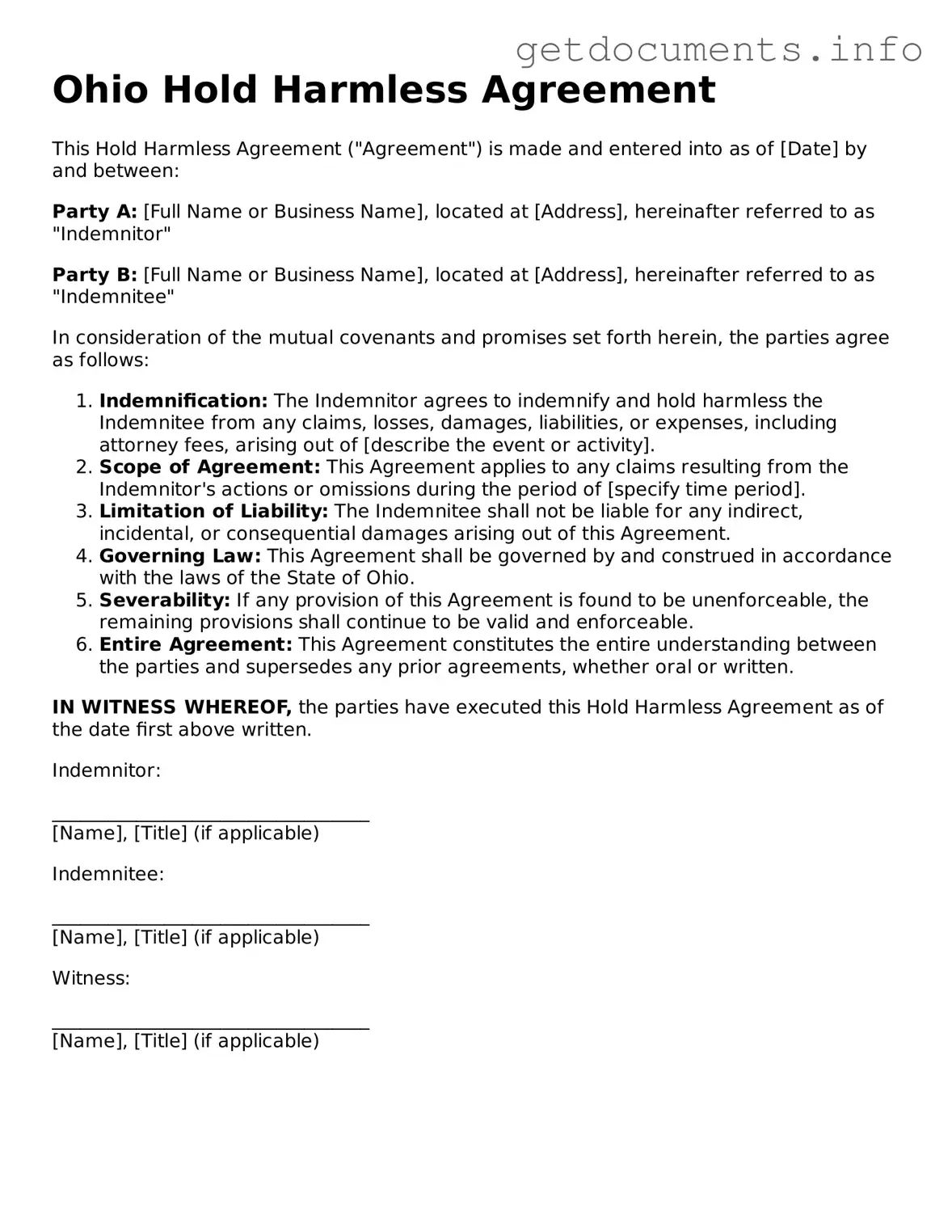In Ohio, the Hold Harmless Agreement form serves as a crucial legal tool designed to protect individuals and organizations from liability claims arising from specific activities or events. This agreement establishes a mutual understanding between parties, where one party agrees to assume responsibility for any potential risks, thereby shielding the other from legal repercussions. Typically utilized in various contexts, such as rental agreements, event planning, and volunteer activities, the form outlines the obligations and expectations of each party involved. By clearly delineating the terms of liability, it fosters a sense of security and trust, enabling individuals and organizations to engage in activities without the looming fear of lawsuits. Moreover, it is important to note that while this agreement can provide significant protection, it must be carefully drafted to ensure it complies with Ohio law and effectively captures the intentions of the parties. Understanding the nuances of this form can empower individuals to make informed decisions and navigate potential risks with greater confidence.
